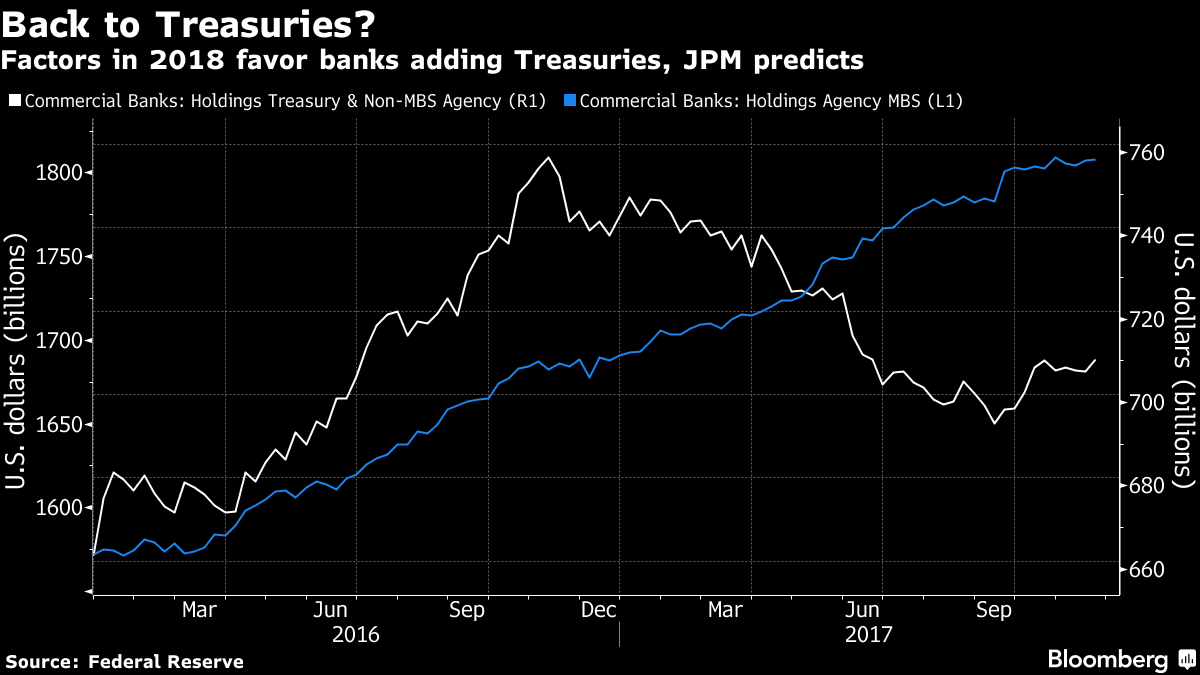With the U.S. about to sell the most debt in eight years, Treasury Secretary Steven Mnuchin may find himself relying on a buyer base that needs to see higher yields before loading up.
Government debt sales are set to more than double in 2018, lifting net issuance to $1.3 trillion, the most since 2010, according to JPMorgan Chase & Co. estimates. With the Federal Reserve shrinking its bond holdings and deficits poised to swell even before taking into account the tax overhaul, all signs point to higher financing costs.
The challenge for Mnuchin is that some analysts predict buying by central banks -- a pillar of support this year -- may fade, in part as international-reserve growth stabilizes. In the view of Credit Suisse Group AG, that will put the onus on more price-sensitive buyers, particularly a group that the Fed classifies as including households, hedge funds, private-equity firms and trusts for wealthy individuals.
“The household sector will have to absorb a significant fraction of new supply,” said Praveen Korapaty, Credit Suisse’s head of global interest-rate strategy. “These guys are asset managers and hedge funds and even households, with a lot of them price-sensitive. They will buy at certain levels, and if yields are low they will maybe not be as interested. That argues for higher yields.”
Buyer Spotlight

The household category held $1.345 trillion of Treasuries as of September, down from $1.409 trillion at the end of last year, Fed data show. That decline came as 10-year yields fell last quarter to the lowest levels of 2017.
By Credit Suisse’s calculation, with the Fed pulling back and issuance surging, the slice of debt sales available for price-elastic buyers to absorb will rise to about 60 percent by the end of 2019, from 54 percent now. It would be their biggest share since the early 2000s.
A spokesperson for the Treasury Department didn’t immediately respond to requests for comment.
The Treasury said last month that it expects to unveil bigger coupon auctions in February for the first time since 2009, and dealers see issuance rising for years to come. With entitlement costs heading higher, the U.S. debt burden was already projected to increase by $10 trillion in the next decade. Now the tax overhaul could boost the deficit by $1 trillion in the period.








